


Naturalistic landscapes do need maintenance, but not much. Here’s a breakdown on what you can expect.
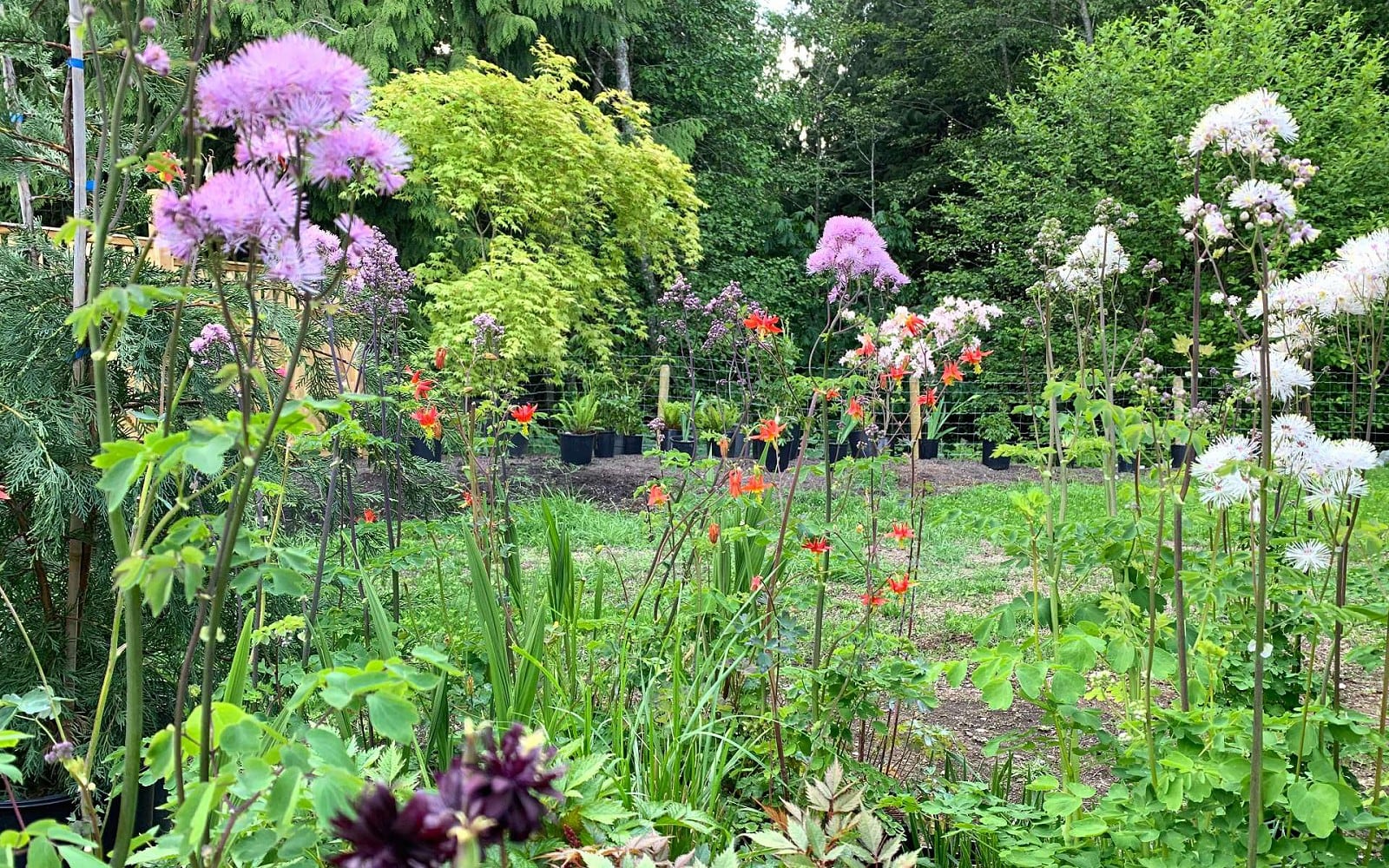
While gardens are incredibly and beautifully nuanced, there are some basic pointers that can be applied to most, if not all of our naturalistic gardens.
To put a number on it, we spend less than 20 hours annually maintaining our 2000 ft2 of home gardens. These 20 hours encompass all the weeding and cutting back necessary in perennial garden maintenance.
The following is a breakdown of that maintenance required at home, and our experiences maintaining gardens that we’ve installed for our clients. (Click the links below to jump right to a specific section.)
A garden needs diligent watering for at least two years before it can be trained for drought tolerance.

At home, in all but the very hottest months of July and August (usually) we water our gardens every three days with drip irrigation. Over a normal two-week period, we are watering five times.
The conventional every-other-day schedule has seven watering days in the same two-week period. This is a 30% difference in water run time, and our gardens have shown no serious signs of stress with this schedule.
Let it be known that we design all our gardens for these conditions, and we push our home gardens a little harder than I may push a client’s garden at the outset. That said, some of our newest garden installations have been scheduled on a 3-day cycle from day one with no ill-effect.
For the third year after planting, our home gardens will be put on a 4-day cycle with a 3-day adjustment made for the hottest months. If a plant can’t take the stress of these changes, I don’t want it in my garden.
There are four main reasons we can afford to water 30% less than the norm:
Cutting back your naturalistic garden is by far the most time-consuming maintenance task.
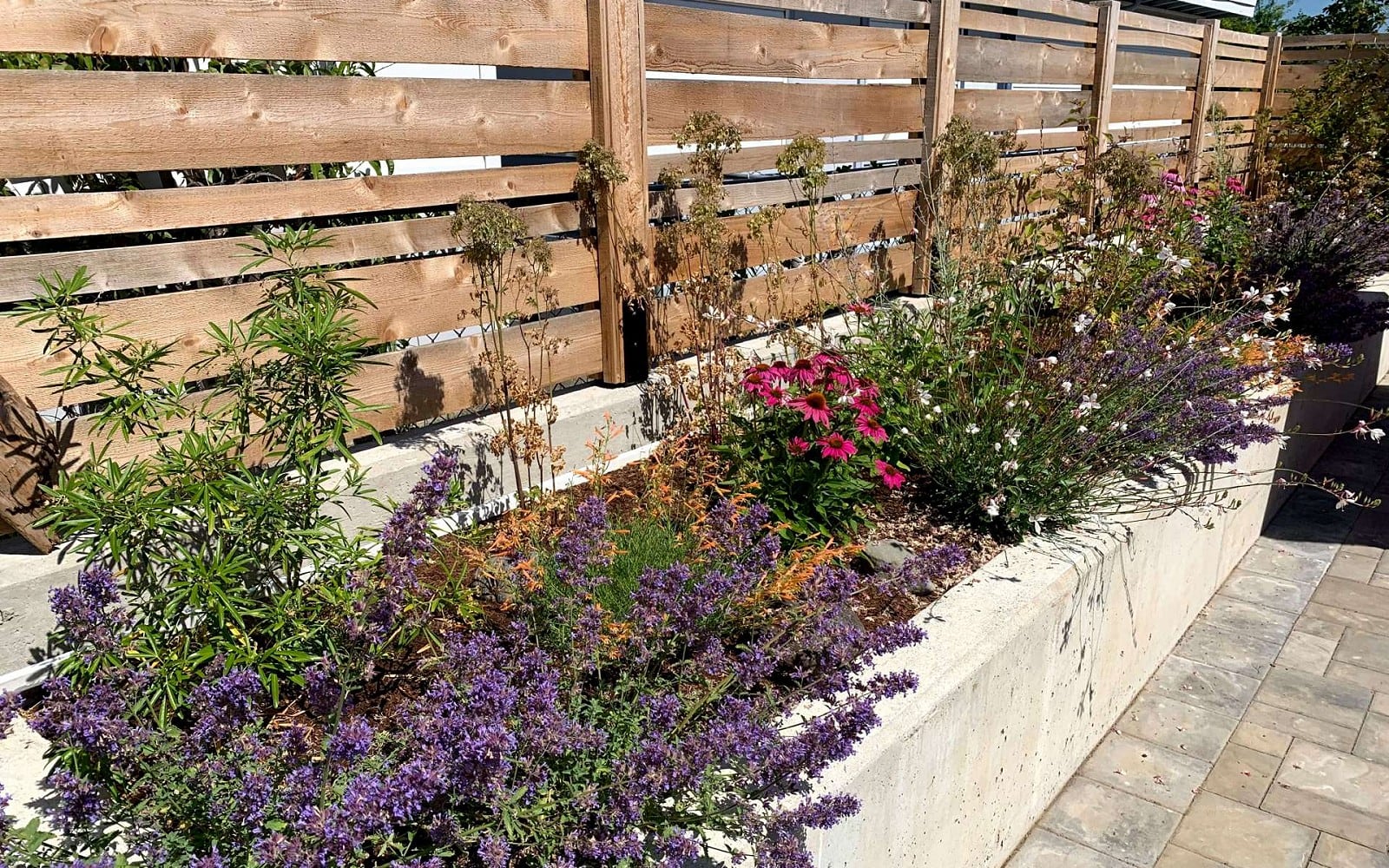
Here on Vancouver Island, your naturalistic garden needs to be cut back in late February before the new growth starts poking through in the spring.
When working in our 2000 ft2 of naturalistic home gardens, we take a sunny Saturday and spend a casual 8-10 hours cutting things back and pulling what weeds have successfully over-wintered. With two people, this means we spend 4-5 hours together working in the gardens.
Some people who want their gardens cut back earlier, but we really don’t recommend this. True, there are some plants such as Iris or Hemerocallis that look simply awful as their foliage turns to mush with the rains.
Aside from these, most of the plants we specify are intended to remain through the winter, and for good reason:
Nature needs death to survive, and it is our belief that we as gardeners must learn to love a dead plant and to celebrate a plant through its entire life cycle, all for the good of our gardens.
Sooner or later, herbaceous perennials get bigger. When they get too big, it’s time to divide.
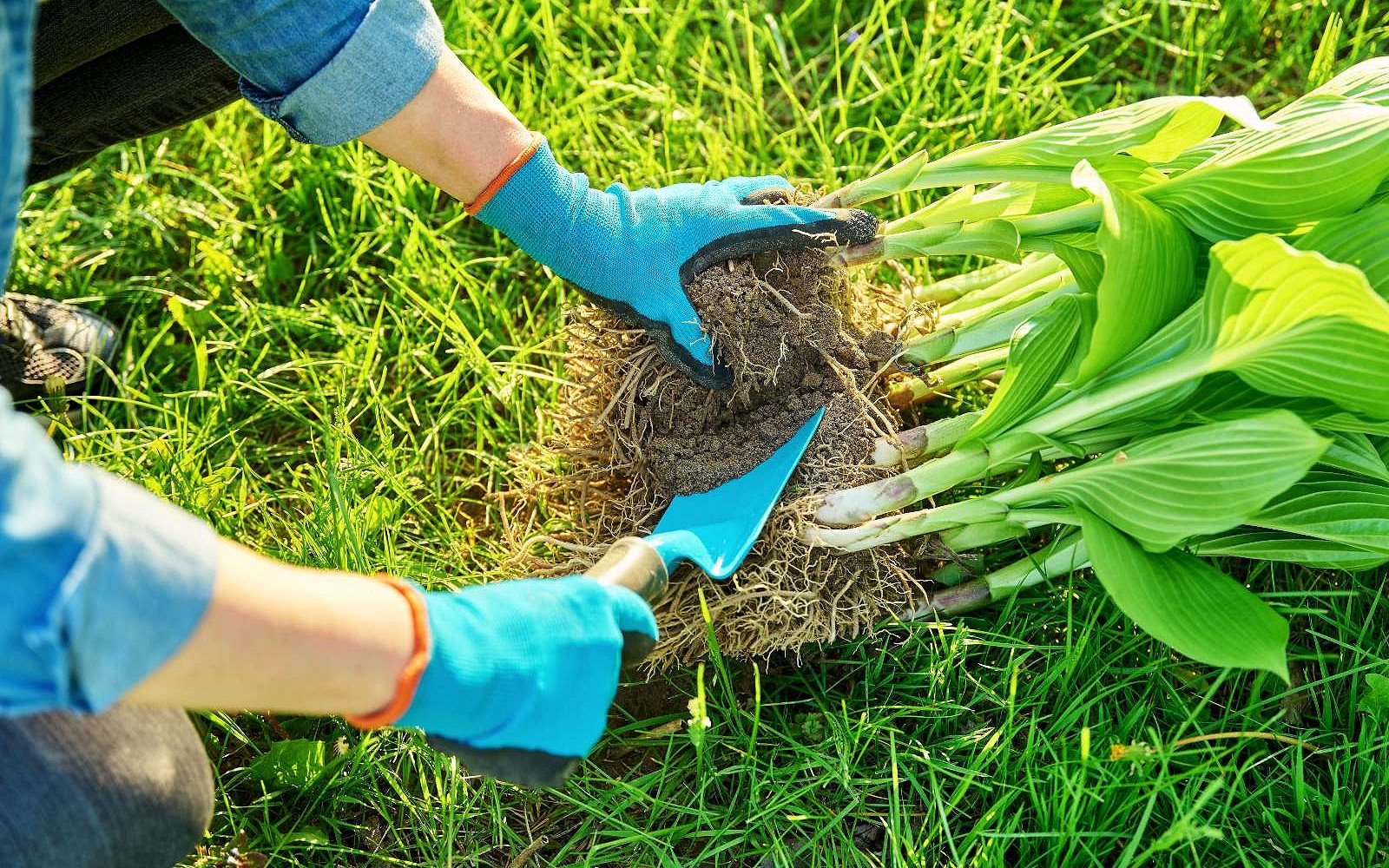
“Dividing time” is when your family, friends, and neighbours get excited, because there’s a little plant give-away coming.
Division happens in early spring when the plants are just starting to wake up. We will divide either because it’s needed, or because we want to repeat this plant more throughout the garden or to simply fill the odd gap that may have appeared last growing season.
Division is as simple as driving a sharp, clean shovel through the root ball of the plant, lifting out a small piece, and replanting it elsewhere. A little bone meal in the planting hole never hurt anything in these situations!
In general we aim to select plants that are well behaved and will interact well together to limit the need for division. However, fast-growing species/varieties like Achillea millefolium ‘Moonshine’, Monarda didyma or Coreopsis verticillata ‘Zagreb’ may need a division every 3 years or so depending on spacing
Remember, division can be only done to grasses and perennials. Leave the trees and shrubs alone for this phase.
A garden is never finished. The editing process is all in the name of quality, aesthetics, ecological value, experimentation, and pure gardening joy!
Without exception, a naturalistic garden will require certain amounts of editing at various times in the garden’s life.
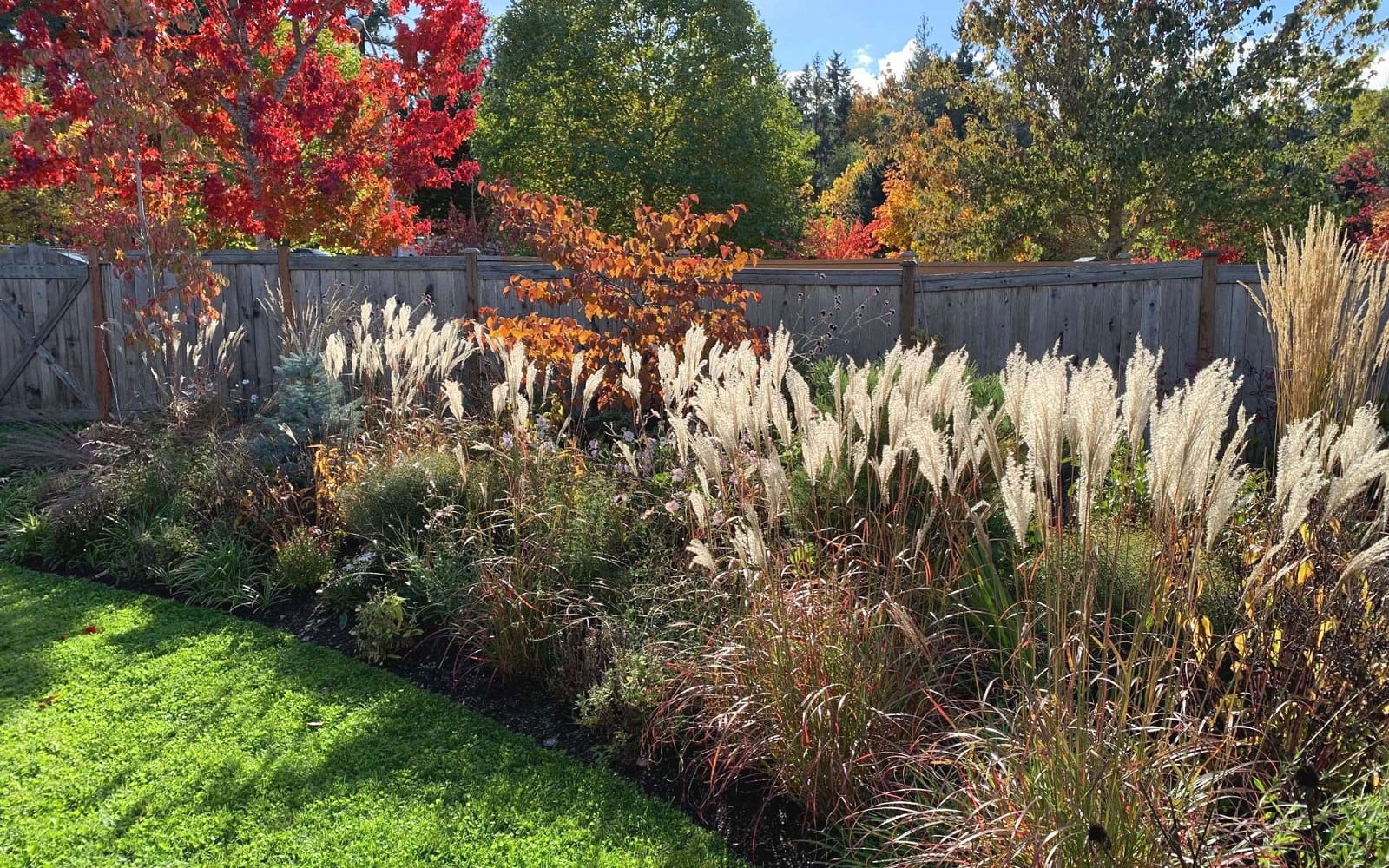
Micro-climate, soil type, and the many complex biological interactions will all affect the long-term outcome of any planting. Editing your garden is how you can stack the odds in your favour.
The editing process may involve some or all of the following:
When the time of year is right (preferably autumn or early spring) we can simply shift things around as needed to provide necessary space or tighten up any gaps in the planting.
There are times when we may run out of patience for things to fill in, and so adding the odd plant is the answer.
Plants live, plants die. For example, we lost a handful of plants in a few of our gardens between the heat dome and intense rains of 2021/22. We’ve of course made the odd mistake in specifying an unsuitable plant (here’s looking at you, Penstemon ‘SteppeSuns Sunset Yellow’). But most often it’s a natural factor (or perhaps a little too much neglect) that contributes to a plant’s demise.
With so many hours invested in the design process, we really treat our gardens as a living work of art, and I (Scott) can never really let them go. From time to time, I may recommend that we make a swap based on colour, size, texture, bloom time, increased pollinator benefit, and so on. Our clients are under no obligation to act on these suggestions, but we will always share our professional opinions in the best interest of the garden. Our client’s preferences and tastes may also change, and it’s immensely pleasing to see people experimenting and building on our work, making it their own.
Mulch blocks the sun’s intense rays from harming the soil biome, and reduces evaporation, taking valuable water otherwise used by the plants.
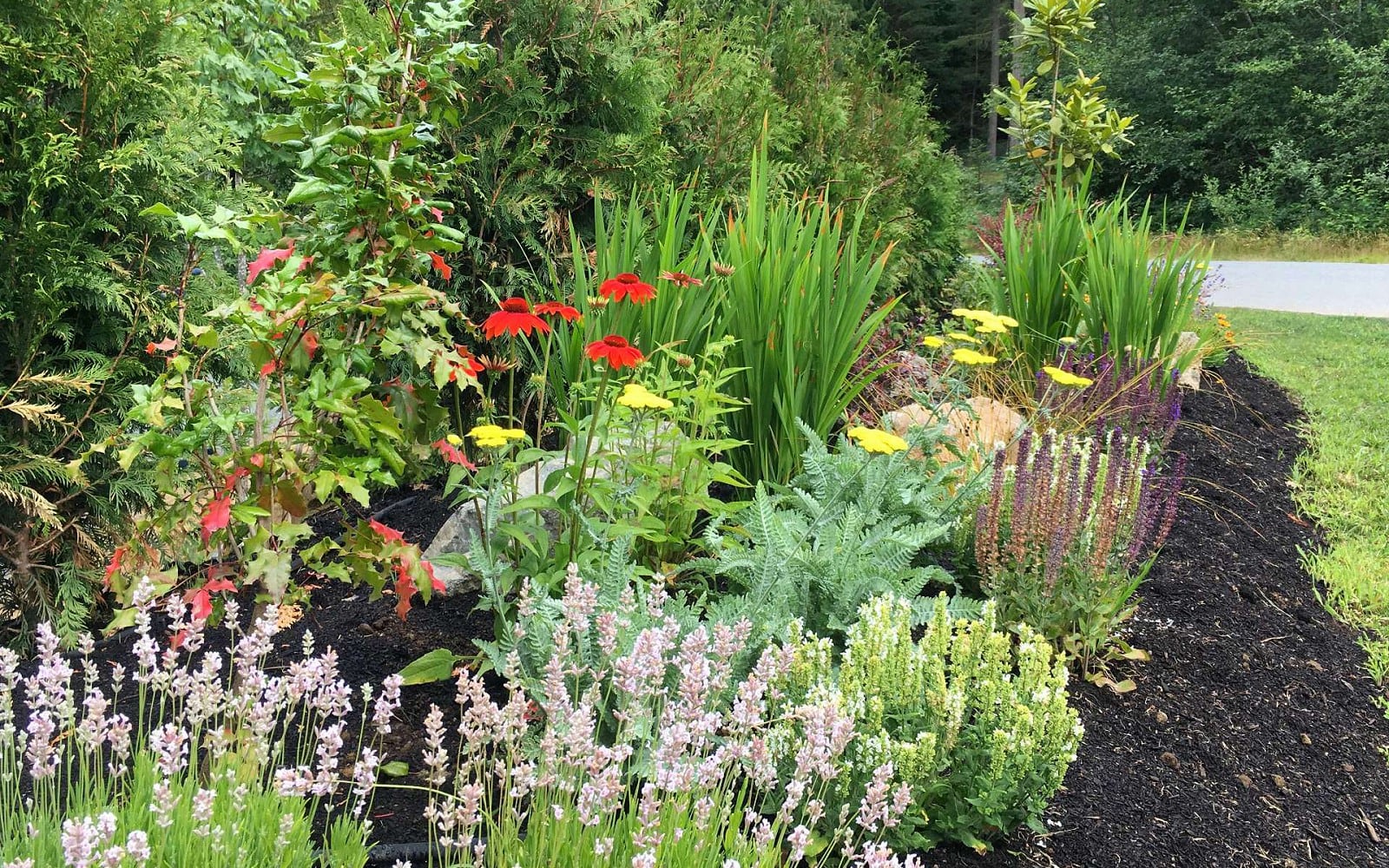
At North Arrow we’re experimenting with a new mulching method on an opt-in basis. Given that not a single plant on Earth has evolved to thrive in accumulated bark, we will be recommending our clients use the “cut and drop method” for their February garden clean-ups.
Bark mulch tends to cake up, becomes hydrophobic, and will snuff out the expanding crown of a plant. To paraphrase the words of Roy Diblik, bark mulch takes a plant with a life span of 20 years or more and compresses it into 8 years. Not good!
The “cut and drop” method means we will use a hedge trimmer to cut the dead plant material into tiny pieces and simply leave it in the garden.
This presents several key advantages:
The only disadvantage:
While we acknowledge that a fresh layer of mulch can look excellent, with our densely planted gardens it only looks good for a short period of time until the plants grow together.
So, let’s do away with it! 2023 will be the first year we are experimenting with this approach in earnest, and this article will be updated as we record our observations.